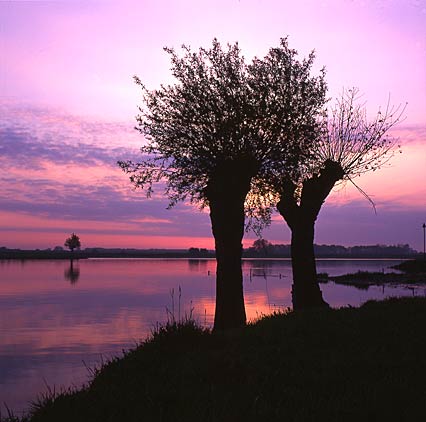

This article is a sequel to What is landscape?, where I discuss questions like 'what is landscape' and 'why do we make photographs of it?'.
Browsing through photo magazines or all kinds of photo sites, one gets to think that landscape photography mainly consists of catching the perfect moment. Stunning light, special colours and presented in a clever composition.
For a long time I tried to equal all those fantastic photographs - and still my heart beats faster when a morning comes in
colourful light or when the evening sun peeps through drifting clouds. But in my opinion there are more approaches
to the landscape. [ 1 ]
Most of the day the landscape has a different look, doesn't it? Maybe less
beautiful, but more real, more like it is - all those sunset time landscape photographs tend to come down to the same.
So my point is this: how can one approach the landscape more as a personality on its own? More as a place where plants and animals are living their lives, where people built their home. Not just as a visual spectacle.
In this article I share some thoughts I have on this topic.
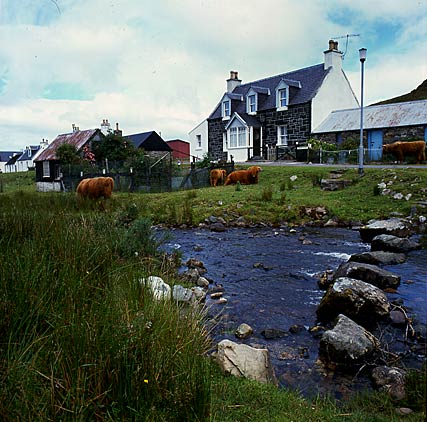
DISCLAIMER: I absolutely do not want to say that one approach is better than the other. I want to find a less obvious approach and to discuss questions like: what are the photographer's intentions, what are the effects of the image on the viewer, by which means can a photographer support his vision?
A comparison with portraits may help to clarify my intentions. Portrait photographers have always used several approaches, varying from glamour to documentary images.
The latter are made without changing the subject - it is about showing the typical and characteristic under normal circumstances. A lot of attention goes to the environment of the one who is portrayed, because that tells something about the subject.
The former uses make-up and hair-styling, clever clothing and suggestive lighting. It is not so much about making an image of that particular person, but more an imagination of ideas like 'youth', 'sexy' or 'old and wise'.
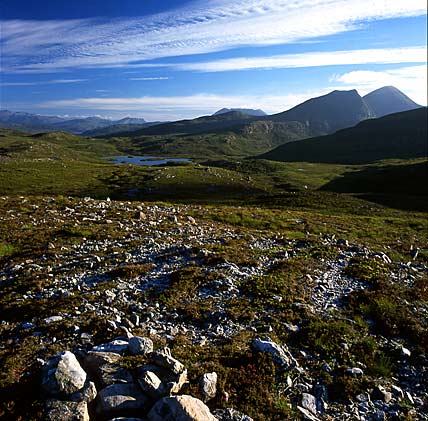
The same could be said about landscape. Photos like I mentioned above - stunning sky, special colours, clever composition - could be seen as 'glamour'. Of course, the photographer cannot change the light, not to mention make-up or clothes.
But he can chose the moment to press the shutter and the composition in such a way that some aspects of the landscape are stressed - or left out.
For the sake of this article I don't even mention what is possible with analogous or digital post-processing.
On the other hand, a photographer can chose a documentary approach. Looking for a way to photograph the landscape 'like it is' - or as it acts as a background for people, animals and plants. This can be done out of a geological, biological or sociological interest - or as an artistic or religious pilgrimage.
That is by no means denying the use of composition, colour or light. A photojournalist will look for a catchy composition, to attract attention to the core of what is going on. But in the end the visual spectacle will not be the real subject here - unless of course one goes
for the wondrous world of meteorology or the like.
It is for a reason that brochures aimed at tourists are full of landscapes at sunset or beaches with palm trees. And of course that cosy plaza with those nice restaurants. New housing blocks or simple farm land are not included.
Illustrations in an atlas or primer on sociology give another image. Natural phenomena and circumstances of living and working are stressed above beauty.
An important difference between both kinds of photographs is in the intention of the photographer, why they are made. The last kind of photos aim to picture the land concerned as it is. The first aim to persuade tourists to head for that specific destination. It is not so much about the look of the country, but about how the tourists like to see it.
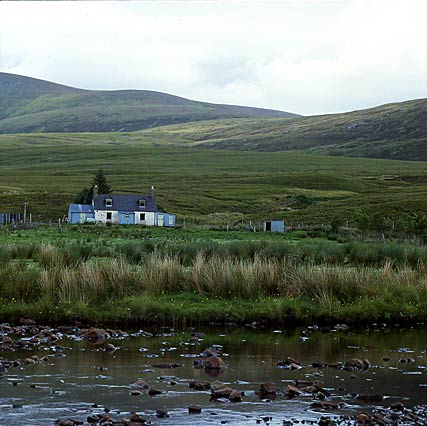
Speaking about that: tourists have different tastes. A walker likes other pics than the beach fan and a wine lover sees pictures of vineyard in another way than a eager snowboarder.
The photograph at the left has e.g. for me a clear glamourous value. For I would like to live in such a cottage. But I know a lot of people who can only mutter in bewilderment 'imagine having to live there'.
And yes - as for myself, I do not like such a busy Spanish beach. Imagine having holiday there...
In short: one can make images of the landscape as an environment - for people, and for animals and plants as well. Or one can try to imagine certain ideas and feelings, like 'tranquility', 'space', 'romanticism' etc. Landscape used as an imagining of emotions or as evocation of inner feelings.
In short: imagination versus image; evoking versus depicting.
These things also depend on this question: do you think of landscape as an opposition to human culture - the landscape as a place to escape town - where the landscape is a symbol for what you are missing in your current environment.
Or do you think of it as a landscape where people made their homes within the original natural framework. A landscape with a character of its own, which is the home environment for others.
This question is also discussed in the article What is landscape?
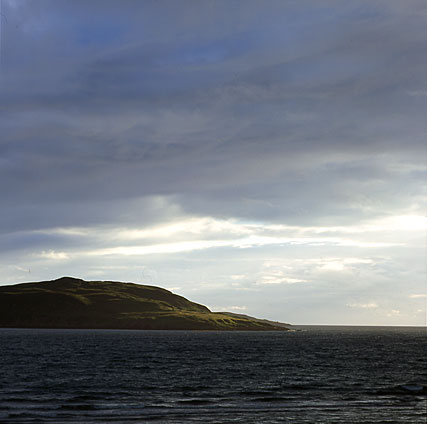
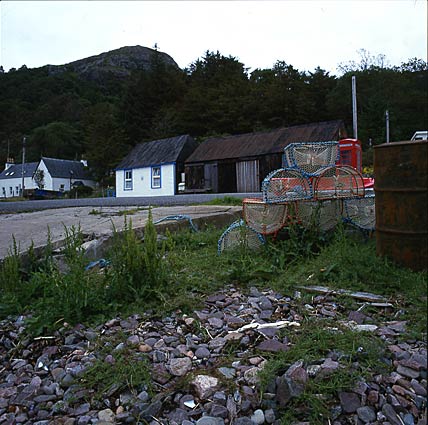
The photo on the left shows an islet at the Scottish west coast during a stormy evening. The atmosphere has a feeling of loneliness, wild nature, a contemplative life - something for monks looking for isolation.
On the other hand the photo on the right shows a rather straightforward image of a harbour, part of a typical Scottish
crofters settlement. The photo describes what the place is like. I tried to find a pleasing composition, but nevertheless the photo is mainly documenting.
In other words: in the second image the attention is drawn to 'that harbour over there'; in the first image the viewer is confronted with his own attitude towards wild nature and loneliness.
A possible reason to reject the glamour approach is the manipulative character of this approach. Doesn't one try to suggest what is not there? What about honesty to the viewer?
Actually this a question similar to 'is a novelist being honest by writing fiction?'. For he does suggest a reality which is not there and he magnifies certain human qualities, while other aspects are left out.
The difference with photography probably is that a reader knows he reads fiction and he adapts his perception of what he is reading accordingly. He will not see the novel as the real reality. Therefore he won't feel
deceived.
Looking at photographs most people are not so conscious of the difference between image and reality. The camera lens seems to
register very objectively and the image makes the viewer feel like having seen it by himself. That can be a bit of a disappointment if you enter that hotel room out of the tourist brochure...
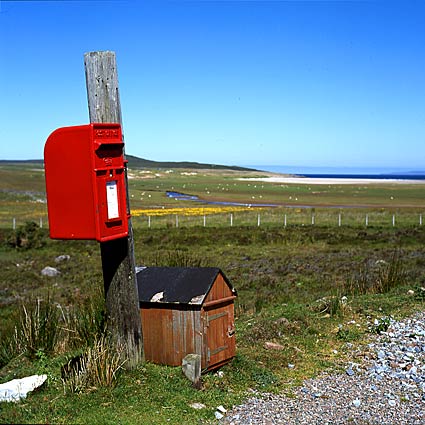
But is the documentary approach objective? Probably those less spectacular photos are seen as being even more real.
Nevertheless the documentary working photographer makes his choice of subjects and photographic means as well. A tele-lens image can make a village and industrial plant look much closer than they really are - or a wide-angle image can flatter the photos of the estate agent.
So the viewer should never give up his critical eye. He should be aware of the manipulative powers of images, in order to interpret an image more precisely. Such a viewer does understand that the sun doesn't set whole day...
Another point is that a large part of the manipulation is done by the viewer himself. It is not only the photographer presenting a certain image in a certain frame - the viewer interprets the image in his own frame as well. So he will see the plaza with all those people as cosy - or a place to avoid.
In other words: a photographer decides what the viewer will look at - but not how he will see it.
And is glamour manipulative as such? In my opinion it is not. The question is more about esthetics than ethics. Is this approach to be preferred above the documentary one?
Unlike the glamour approach, documentary landscape photography is informing and narrating. As a consequence these pictures will often be presented in a series, to show more aspects of one and the same subject.
Therefore a photographer has to have a specific mindset. He not only notices what is visualy attractive but he pays attention to turning it into a story as well.
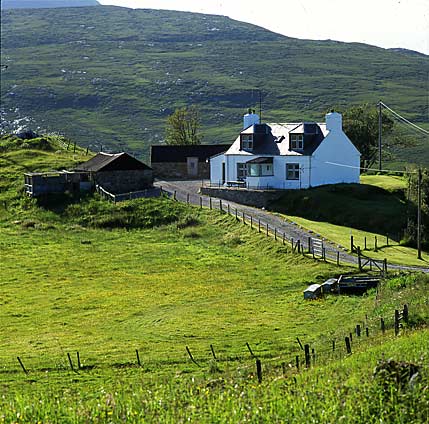
More often than with a stunning shot of a fantastic landscape, such documentary images will urge the viewer to reflection. Instead of mere awe as a reaction, he will be inclined to compare the image with his own environment. He will try to put himself in the place of the landscape's inhabitants.
This is also the reason why landscapes with a human element in it work better for me than the ones without. I can see the awe of a great natural landscape, but a 'human landscape' makes me ponder more about my own life and world.
In other words: I like landscape photography as a means to reflect on my own world, and therefore a landscape needs at least to have some points in common with my own environment.
This approach can train the viewer to see the peculiar in the normal. Beauty is not only to be found in the picturesque or amazing. He who wants can find it everywhere.
[ See about the photographer about this topic as well. ]
Can this documentary approach aimed at education and information be artistic? I do think so. It is no l'art pour l'art indeed, but that doesn't necessarily mean that it is no art at all!
It is about the same as in literature: there are novels, poems, travel-stories - different genres, but all are literature.
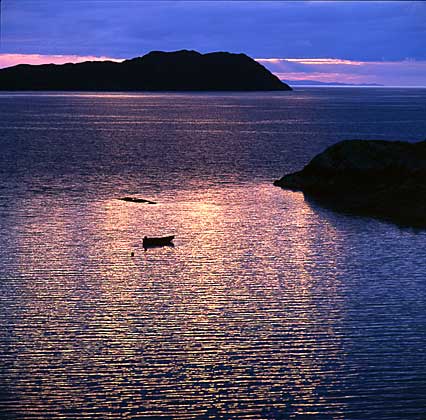
To give a landscape a really glamorous look, the photographer can use various tools. To begin with he can use
supersaturated films like Velvia (aka as Disneychrome) or raise some levels in PS. This makes the landscape colourful even if nature isn't.
With a wide-angle lens (compare my article: on focal length) an enormous width is suggested. Landscapes as well as hotel rooms are made larger than they are. On the other hand tele-lenses can be used to stress near distance and
intimacy.
But the photographer's main weapon is the light: he often will
choose early morning or late evening. He knows the light around noon is harsh and a grey sky won't deliver a brilliant landscape image.
He will place his camera in such a way that that road won't be visible, while that sweet little cottage can be part of the image.
The documentary working photographer can use less gear. He chooses a neutral film and avoids excessive wide-angle or tele and works in all kinds of light. Ergo: little use of extremes.
He will as well make other choices for composition. As long as the elements stay in touch with each other, even a road or a row of electricity
pylons can be part of the photograph.
And last: a documentary will always be more than one photograph. So the photographer wants to make a series of images that tell the story (sorry: render reality!).
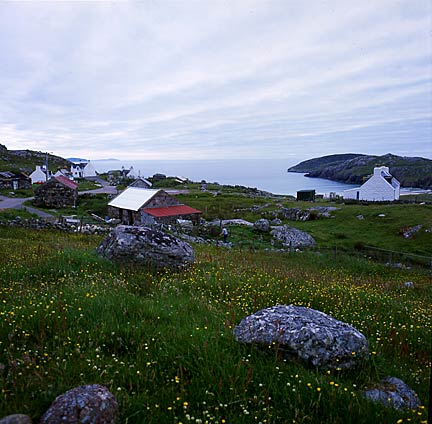
I started this article with the remark that most landscape photographs have a certain glamorous look. (Apart from scientific, administration, etc. photos)
I myself like to make pictures like that, but most of my slides are of the documentary category: the film I use is not overly saturated (provia 100), I do not use ultra
wide and rarely long tele. And I always work with series of photographs.
Subject of my documentaries are mainly the rugged parts of Scotland, Ireland the Netherlands (as far as these exist in here). This choice reflects my personal preferences. I feel attracted to that kind of landscapes and would like to live there. So much for my objectivity.
One could therefore say that my documentaries represent the ideal of living in
harmony with nature, far away from urban greyness. And yes I do - and why wouldn't I? As a photographer I can be free to be subjective and look for landscapes I like!
On the other hand, I do not go as far as some other photographers who like to suggest that Scotland is uninhabited - one piece of authentic nature. I am thoroughly aware that that is not the case (also look at my article: backgrounds of the Scottish and Irish landscapes).
In my photographs I want to show how people live there and their bond with the landscape.
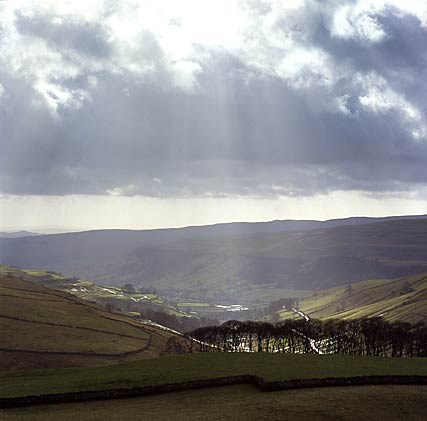
And finally: I actually do like glamour and mystical atmosphere. I do not want to preach the documentary approach as gospel. After all, we do not have to get all mythology out of this world, do we? It is a good thing that landscapes have their own magic.
Glamour and documentary are not ultimately in opposition, but possibilities mankind has to map the world. And not only the wide world outside the viewer, but the one inside as well!
1: I do not discuss the more abstract approach to the landscape, where the image is about form and colour only. return to text
This article is written by Wim van Velzen, © 2003.
Comments on the article and photographs are welcome!I am still looking for some thoughts on the place of black&white in the whole of this. Since I don't use it myself, I do not want to state anything about it.
Do not hesitate to send me some of your thoughts!The landscape photographs shown here and lots more are put in several portfolios!
It is also possible to order landscape prints or to use them editorially or commercially.